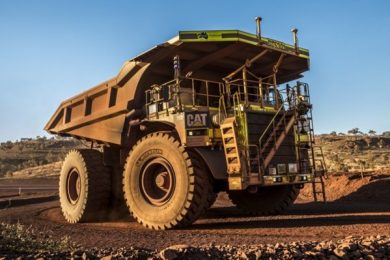The benefits of autonomous vehicle technology apply both to public roads, but also to mine sites, as the IM readership is well aware. But what of safety standardisation in autonomy? Dan Roley is the past Chair for The International Organization for Standardization (ISO) technical committee on earth-moving machinery (ISO/TC 127). Recently published is ISO 17757, Earth-moving machinery and mining — Autonomous and semi-autonomous machine system safety, the purpose of which is to provide safety requirements for autonomous machines and semi-autonomous machines used in earth-moving and mining operations, and their autonomous or semi-autonomous machine systems (ASAMS).
ISO states that it specifies safety criteria both for the machines and their associated systems and infrastructure, including hardware and software, and provides guidance on safe use in their defined functional environments during the machine and system life cycle. It also defines terms and definitions related to ASAMS.
It is applicable to autonomous and semi-autonomous versions of the earth-moving machinery (EMM) defined in ISO 6165 and of mobile mining machines used in either surface or underground applications. Its principles and many of its provisions can be applied to other types of autonomous or semi‑autonomous machines used on the worksites.
Safety requirements for general mobile EMM and mining machines, as well as operators, trainers or passengers on the machine, are given by other International Standards (e.g. ISO 20474 and the future ISO 19296). ISO 17757 addresses additional hazards specific and relevant to ASAMS when used as intended.
As the ISO points out there is more risk of operator error with manned mining vehicles and even when error doesn’t end in accident, operator ability can have a major impact on machine longevity and productivity. “With wear parts such as tyres and brakes costing many times more than their regular roadgoing counterparts, and potentially lower use of fuel and oil, there is an economic argument for autonomy to be made alongside the case for safety. In helping to protect the machine from different styles and abilities of operator, in using detailed feedback from sensors in place of gut feeling, maintenance can be scheduled more predictably with less frequent replacement of parts. When these time and parts savings are combined with those of running round the clock with minimal intervention, the advantages of the autonomous mine are clear.”
The ISO statement adds: “In many cases, the technology is used to adapt existing vehicles, although some models are planned and built as autonomous versions. In fact, mines in both Australia and Chile have been using degrees of automation for more than a decade. And although it is the big-ticket items performing repetitive work, such as dumper trucks, that are first in line for automation, it’s likely that the technology will filter down to cover other machines.
Dan Roley, the past Chair for the ISO technical committee on earth-moving machinery (ISO/TC 127) states: “What we’ll probably see in the future is the technology being more widely used for equipment such as dozers and loaders. It has the potential for us to change the way we think, as earth-moving and mining machines become safer and more efficient.”
ISO 17757 plays a major part in advancing that goal. “By setting a common foundation for all manufacturers to follow, the risk of going-it-alone is ditched in favour of a shared solution. The market for heavy equipment benefits from highly specialised manufacturers.” But mines are serviced by machinery from drill to smaller construction-sized machines that are manufactured by a dozen different companies. “To realise the advantages of an integrated, autonomous system, all of these products, designed and produced in different countries, have to be able to work together safely,” explains Roley.
The ISO concludes: “In an environment where margins can be thin and safety is paramount, the mining industry has been quick to catch on to the benefits of automation. So while it may yet be years before public confidence and technology have sufficiently progressed to make autonomous vehicles a regular sight on our roads, the mining industry is already unearthing new benefits, thanks to nuggets like ISO 17757.”










